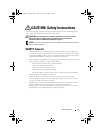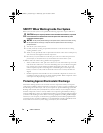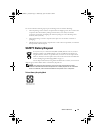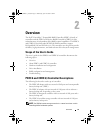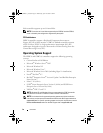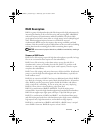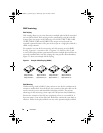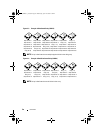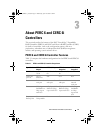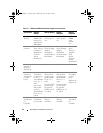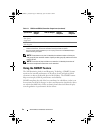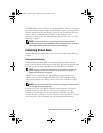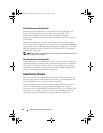
Overview 19
Disk mirroring provides 100 percent redundancy, but is expensive because
each physical disk in the system must be duplicated. Figure 2-2 shows an
example of disk mirroring.
NOTE: Mirrored physical disks improve read performance by read load balance.
Figure 2-2. Example of Disk Mirroring (RAID 1)
Spanned RAID Levels
Spanning is a term used to describe the way in which RAID levels 10, 50,
and 60 are constructed from multiple sets of basic, or simple RAID levels.
For example, a RAID 10 has multiple sets of RAID 1 arrays where each RAID 1
set is considered a span. Data is then striped (RAID 0) across the RAID 1
spans to create a RAID 10 virtual disk. If you are using RAID 50 or RAID 60,
you can combine multiple sets of RAID 5 and RAID 6 together with striping.
Parity Data
Parity data is redundant data that has been generated to provide fault
tolerance within certain RAID levels. In the event of a drive failure the parity
data can be used by the controller to regenerate user data. Parity data is
present for RAID 5, 6, 50, and 60.
The parity data is distributed across all the physical disks in the system. If a
single physical disk fails, it can be rebuilt from the parity and the data on the
remaining physical disks. RAID level 5 combines distributed parity with disk
striping, as shown in Figure 2-3. Parity provides redundancy for one physical
disk failure without duplicating the contents of entire physical disks.
RAID level 6 combines dual distributed parity with disk striping. This level of
parity allows for two disk failures without duplicating the contents of entire
physical disks.
Stripe element 1
Stripe element 2
Stripe element 3
Stripe element 1 Duplicated
Stripe element 2 Duplicated
Stripe element 3 Duplicated
Stripe element 4 Stripe element 4 Duplicated
Dell_PERC6.1_UG.book Page 19 Wednesday, April 15, 2009 4:18 PM



